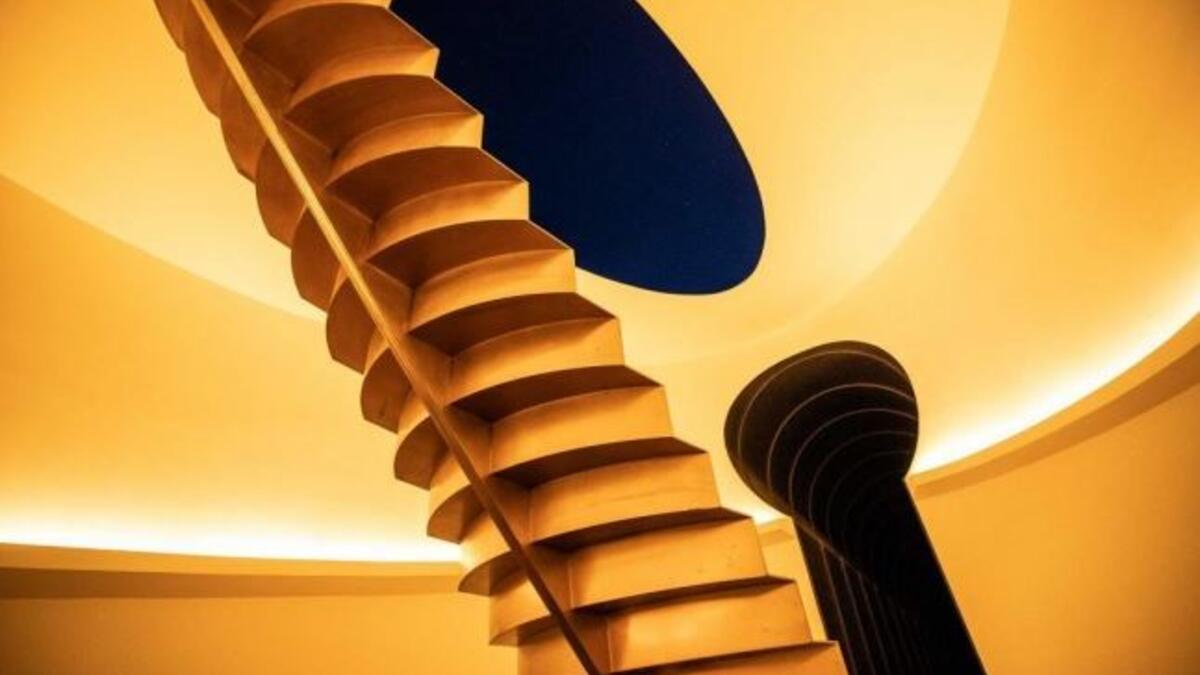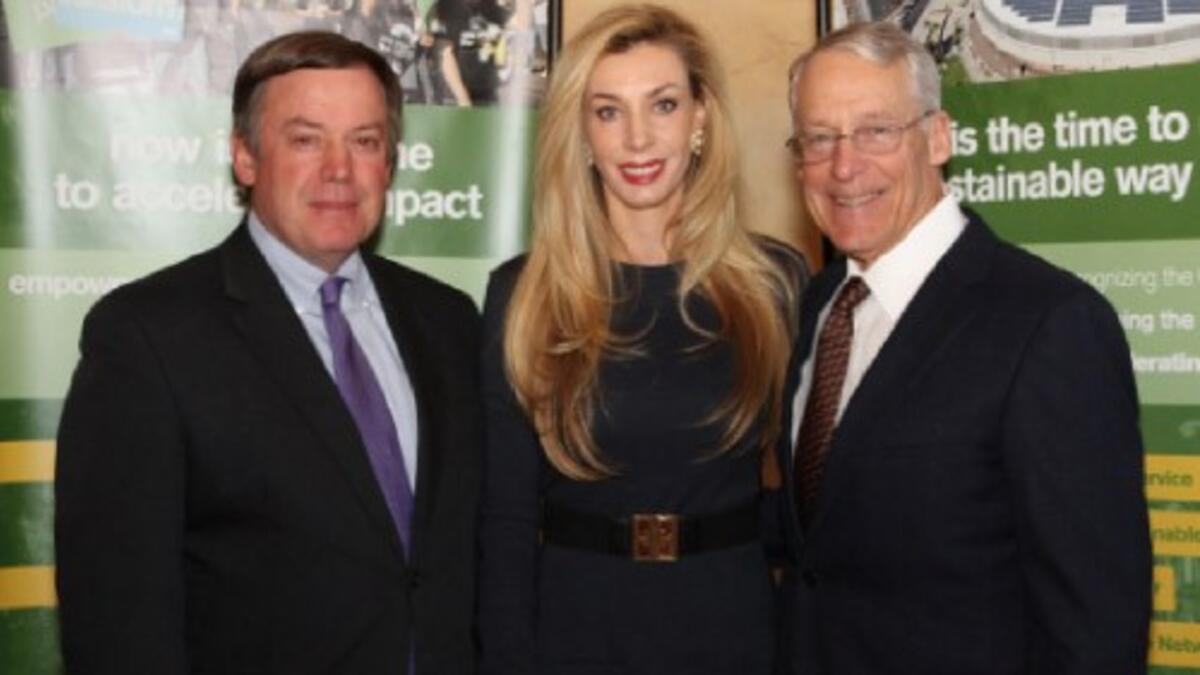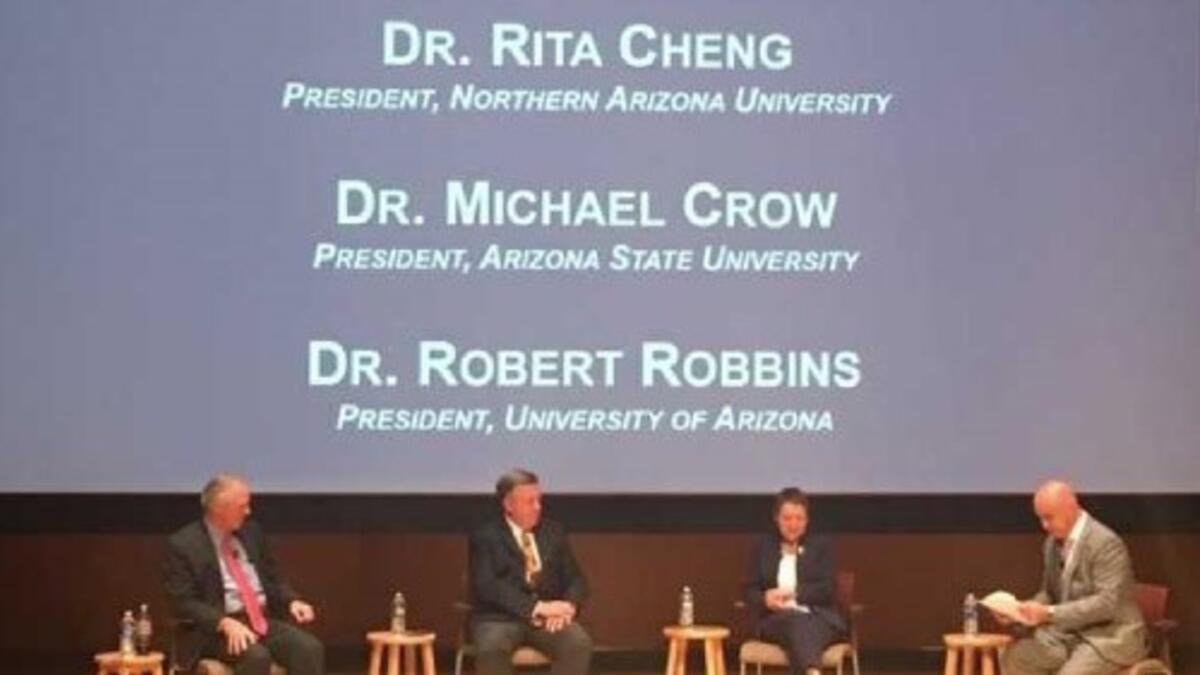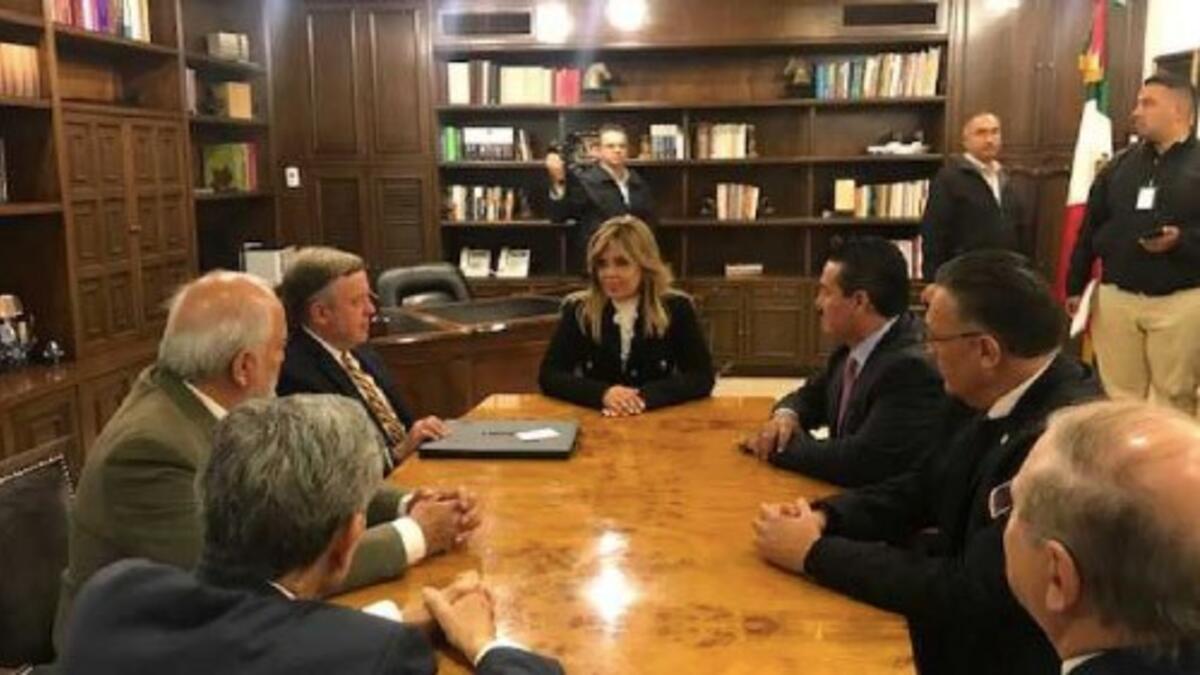
Updates from the President
Updates from President Crow: January 31, 2019
- How a university and an artist collaborate to complete a masterwork
- Sustainability, business gifts demonstrate vision, confidence in ASU
- Understanding ASU's legislative priorities and university development
- Sonora's government, universities welcome ways to enhance access

A peek inside Roden Crater, James Turrell’s initiated masterpiece of light and space in northern Arizona. (Photo Credit: Jordan Currier, ASU Enterprise Marketing)
How a university and an artist collaborate to complete a masterwork
In a tremendous start to 2019, Arizona State University is partnering with world-renowned light and space artist James Turrell to help complete his most highly anticipated project, Roden Crater. Turrell has worked for decades to plan and create an unparalleled art installation inside the volcanic crater located outside Flagstaff, Arizona. ASU is the site of one Turrell work, "Air Apparent", but a visit to the currently invitation-only crater reveals an environment unlike any I have experienced before.
Our recently announced partnership will assist in fundraising directed to the crater’s completion and establish infrastructure and conservation measures for the site and its surrounding area. In addition, the collaboration will allow the integration of Turrell’s work into various interdisciplinary academic programs at ASU, giving our students unique access to the artist and the site. Eighty ASU faculty members and students will be among the first to visit the site to advance their studies, and we are very excited to make this rare opportunity available to our scholars and eventually, to the public.
ASU is honored to help realize James Turrell’s vision, and I invite you to learn more about his incredible endeavor.

Rob and Melani Walton continue to advance their enduring commitment to groundbreaking sustainability education and research leadership. (Photo Credit: ASU Now)
Sustainability, business gifts demonstrate vision, confidence in ASU
Adding to the excitement of the new year, we also were thrilled to receive two very significant investments in ASU’s students and our efforts to solve major global challenges.
First, we were proud to announce the permanent establishment of the Rob and Melani Walton Sustainability Solutions Service, a commitment to help ASU’s ongoing advancement of sustainability education and research. Through the service, ASU will formulate solution-based projects with students, faculty, and outside partners, and implement effective programming within ASU’s sustainability programs. To date, the Waltons have donated $32 million toward sustainability solutions at ASU.
In a second announcement, the W. P. Carey School of Business received gifts of $15 million in support of student success programs and another $10 million to establish two endowed professorships from the W. P. Carey Foundation. The Foundation also committed to working with the ASU Foundation to help raise another $25 million for the school. These gifts, along with the Foundation’s original $50 million investment in 2004, bring their total gifts to $100 million.
These generous acts demonstrate the forward-thinking vision and dedication of individuals and organizations focused on education that produces student success and real-world answers for complex problems. It also communicates their belief in plans and abilities of our ASU community, and we are deeply grateful for this incredible support.

Discussing legislative proposals, Arizona’s future, and the importance of investing in in-state students with University of Arizona President Robert Robbins and Northern Arizona University President Rita Cheng on January 11. (Photo Credit: Denise Quiroz, ASU)
Understanding ASU's legislative priorities and university development
At the invitation of the Greater Phoenix Chamber of Commerce, I recently joined the presidents of Northern Arizona University and the University of Arizona in a conversation about our institutional plans and needs for the future. With the legislative session underway and the release of Governor Ducey’s budget , our policy priorities were a key focus. Our discussion included potential changes to the Health Insurance Trust Fund and our request that the state adopt a “50/50” funding model to cover half the cost of educating in-state students. Despite demonstrable efficiency and a growing need for greater college attainment, the state currently has no funding model for its three universities. A shared commitment to evolving Arizona’s future workforce is critical.
In response to past decreases in state funding for higher education, our universities have had little alternative but to become more innovative and entrepreneurial in order to maintain quality and support growth. ASU is producing three times the number of quality graduates, while performing five times the competitive research and doubling our four-year graduation rate. Yet misperceptions continue about positioning an institution for achievements like these and long-term university development.
The Arizona Attorney General’s current lawsuit against the Arizona Board of Regents is one such example. It is not uncommon for universities to leverage property and assets, often received as gifts from donors, in order to advance greater service and opportunity. I invite you to watch the conversation below to learn the facts.

Sitting down with Sonoran Governor Claudia Pavlovich Arellano and state higher education leaders in Hermosillo on January 8. (Photo credit: Paola Garcia, ASU)
Sonora's government, universities welcome ways to enhance access
Building on ASU’s commitment to global engagement and growing portfolio of Mexico initiatives, I made a day-long visit to Hermosillo, the capital of the Mexican state of Sonora, to visit with Governor Claudia Pavlovich Arellano and my counterparts from the state’s multiple universities. We discussed the need for greater higher education access and college completion, and explored ideas for new collaborations in learning and research.
Of special note, Governor Pavlovich and I advanced ideas for optimizing ASU’s technology-enabled model to help create a Sonoran virtual university. A tour of the National Technological University of Mexico by its director, Adolfo Rivera Castillo, also provided an opportunity to learn more about aerospace education in Sonora and possibilities for joint projects.
All in all, our trip was productive and optimistic about the strides that can be made through cooperation. ASU looks forward to continuing these conversations with our colleagues in the future.